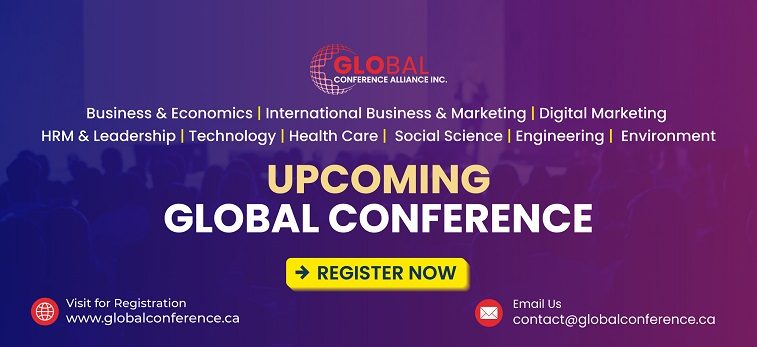Writing a product development conference paper can sound difficult, but it’s really just about keeping things simple. The goal is to share your ideas in a clear and organized way. You need to explain what problem you looked at, how you studied it, and what you found. Still, many wonder how to write a product development conference paper.
To write a product development conference paper, start with a clear title and a short summary (abstract). Explain the problems, your research method, and what you found. Use tables or pictures to show results. End with a conclusion and add references. Keep your writing clear, follow the rules, and check for mistakes.
Keep reading to find everything to create a clear, professional, and impactful paper for a product development conference.
How to Write a Product Development Conference Paper?
Writing a product development conference paper requires a step-by-step approach. You need to share your research clearly, explain findings with evidence, and give useful insights. With the right structure, your paper can stand out and create strong value for readers. Here are the key steps to follow when writing a product development conference paper:
Step 1: Title Page and Details
- A proper title page shows the paper’s name, authors, affiliations, and date, helping the audience recognize important information.
- Conference organizers expect neat details upfront, so keep them clear, accurate, and formatted exactly as submission guidelines demand.
Step 2: Abstract Summary
- The abstract offers a small picture of your study’s goal, method, findings, and conclusion in a few words.
- Readers decide whether to continue after reading the abstract, so make it concise and easy to understand.
Step 3: Introduction or Purpose
- Introduce the problem or challenge, highlight objectives, and share why your research matters in product development today.
- A strong introduction builds curiosity and shows how your work connects to real product development challenges faced globally.
Step 4: Methodology Section
- Describe the process, research design, or tools used with precision, so other experts can understand and replicate results.
- Detailed methodology ensures your work remains credible, guiding readers through experiments or studies without leaving important gaps.
Step 5: Results and Findings
- Use tables, charts, or graphs to present your results clearly, ensuring readers grasp complex data more easily.
- Outcomes highlight the strength of your research, showing how ideas impact product development practices across industries today.
Step 6: Discussion Points
- Interpret what your results mean, connect them back to the research question, and explore practical applications carefully.
- Address limitations honestly, while offering insight into how your findings can inspire innovation or further work.
Step 7: Conclusion and References
- End with a conclusion that summarizes your major insights, while also suggesting areas for future studies.
- List references in the correct style, making sure readers can track sources and trust your research fully.
Writing a product development conference paper is about clarity, structure, and purpose. Countries like the USA, Germany, and Japan are known for hosting big conferences, and exploring upcoming conferences in USA helps authors understand real expectations. By following these steps, you can craft a strong paper that informs, inspires, and guides future product development research.
Sample the Ideal Structure for a Product Development Conference Paper
Below are three sample structures for a product development conference paper. Each has a slightly different focus but still follows accepted conference formats. This way, you can choose the structure that fits your research style best.
Sample 1: Standard Research Paper Structure
Best for: Academic-style papers with strong research data.
- Title Page – Paper title, author(s), affiliation(s), date.
- Abstract – Short summary of objectives, methods, results, and conclusions.
- Introduction – Define the problem, set objectives, and explain relevance.
- Methodology – Describe research design, tools, and processes.
- Results – Present findings using charts, tables, or figures.
- Discussion – Interpret results, note limitations, and link to real-world product development.
- Conclusion & Recommendations – Summarize outcomes and suggest practical applications.
- References – Cite all sources according to guidelines.
Sample 2: Innovation-Focused Paper Structure
Best for: Papers highlighting new ideas, tools, or frameworks.
- Title Page – With paper details and author(s).
- Abstract – Clear overview of innovation and its value.
- Background & Problem – Context of industry challenges.
- Proposed Solution/Method – Innovative idea, model, or process explained.
- Implementation Process – How the idea was tested or developed.
- Evaluation/Findings – Evidence of effectiveness with visuals.
- Impact & Applications – Potential influence on future product development.
- Conclusion – Summarize key insights and innovations.
- References – Include supporting literature.
Sample 3: Case Study-Based Paper Structure
Best for: Sharing lessons from a specific company, project, or product.
- Title Page – Include project/company details.
- Abstract – Short overview of the case study.
- Introduction – Context, objectives, and significance of the case.
- Case Description – Detailed account of the product/project.
- Methods Applied – Research, processes, and tools used.
- Results – Measured outcomes, successes, and challenges.
- Discussion – Analysis of what worked, what failed, and why.
- Conclusion & Lessons Learned – Practical takeaways for product development.
- References – Cite related work, studies, and supporting material.
Tips for Writing a Compelling Abstract for Product Development
Writing an abstract may sound tricky at first, but it is not as hard as it looks. Many people feel nervous when they start, yet it is all about keeping things simple and clear. A good abstract helps readers understand the main idea without too much effort. Here are some simple tips to help you write a clear and compelling abstract for product development:
Keep It Simple
An abstract should be easy to read and not filled with long or hard words. Use short sentences that explain your work in a clear way. Avoid adding too many details that belong to the main paper. The goal is to make the reader curious to know more.
Start With Purpose
Every abstract needs to explain why the study was done in the first place. Share the problem or challenge that your paper focuses on. Keep it short, but make sure the reason is clear. This gives readers a reason to keep reading.
Show the Method
Readers like to know how the research was done. Write a few simple lines that explain the process or tools used. You don’t need to share every step, only the most important parts. This helps readers trust the work you did.
Share the Results
An abstract should always include the main findings. This shows people what you discovered in your study. You can keep this short, but make sure the results stand out. If possible, use numbers or simple facts that prove your point.
Connect With Relevance
Readers also want to know why your work matters in product development. You can explain how your results can help in real-life situations. This is also the right place to link your study with larger themes like topics covered at product development conference, so readers see its importance. Keep it natural and easy.
Stay Within Limits
Conferences and journals often give a word limit for abstracts. Make sure you follow these rules carefully. Writing too much can make your abstract lose its power. A clear and short abstract is always better than a long and confusing one.
Edit and Improve
Never send your abstract without checking it first. Read it again and cut out extra words. Make sure sentences flow smoothly and do not sound complicated. A well-edited abstract leaves a strong first impression on readers.
What Methods to Include for Product Design and Validation?
Designing and validating a product needs clear methods that give reliable results. These methods help improve ideas, reduce mistakes, and create stronger designs. By using proper steps, teams make sure products work as expected before reaching customers.
Brainstorming Techniques
- Creative group discussions often lead to many new ideas, allowing teams to explore concepts from several different directions.
- Effective brainstorming encourages open sharing, where every participant contributes unique suggestions that might lead to valuable product improvements.
Market Research
- Studying market trends provides insights into customer demands, ensuring designs align with real expectations and user preferences clearly.
- Strong research helps teams identify competitors, revealing both opportunities and risks that can shape the final product direction.
Prototyping
- Building early models makes it easier to test ideas quickly, reducing the cost of changes during later production.
- Prototypes allow teams to visualize their designs, making feedback collection from stakeholders and users much more straightforward.
Simulation Testing
- Digital simulations predict product behavior under different conditions, helping developers make adjustments before physical testing becomes necessary.
- Simulations reduce material waste, saving time and money while still giving highly accurate insights about product performance.
Usability Testing
- Testing with real users highlights problems early, ensuring designs are functional, practical, and enjoyable for everyday use.
- Feedback from users improves decision-making, guiding teams toward features that deliver stronger value in real scenarios.
Reliability Analysis
- Reliability checks confirm whether a product performs consistently, reducing the risks of sudden failures after the launch stage.
- Statistical methods highlight weak areas, giving developers the chance to correct them before large-scale production begins.
Field Testing
- Testing products in real environments reveals issues that may not appear during controlled laboratory or office trials.
- Real-world testing builds confidence, showing how the product reacts under natural usage and unpredictable environmental conditions.
How to Adjust the Paper to Engineering vs Management Audiences?
When writing for different people, the same idea must be shared in two different ways. Engineers like details, while managers prefer bigger pictures and results. Knowing who will read your paper makes your writing more effective. With the right balance, both groups understand your work. Here are key points to guide your adjustments:
Audience Focus
Before you start writing, think carefully about who will read your paper and why. Engineers may expect technical explanations, while managers may want clear insights. Identifying their needs helps you decide what to include or skip. This step makes your paper more focused.
Language Style
The words you use should match the reader. Engineers prefer exact terms, numbers, and technical language. Managers prefer plain words that show meaning without heavy detail. Adjusting language helps your message connect better with each group of readers.
Detail Level
Technical readers like deep details and full data to confirm accuracy. Managers, however, prefer shorter highlights and simplified points. You must choose how much detail to share for each type of audience. Sharing the right level keeps readers engaged.
Data Presentation
Engineers enjoy looking at graphs, formulas, or complex tables because they need to test and verify. Managers often like charts and simple visuals that explain outcomes quickly. Using the right type of visual for each group is important. It ensures your data looks useful.
Key Interests
For engineers, the focus is on how well a product performs, its efficiency, and technical accuracy. Managers care more about cost, timelines, and market outcomes. Linking these priorities creates balance and makes your paper stronger for both groups.
Real Examples
Adding examples always helps. For engineers, explain experiments, technical designs, or specific models. For managers, showcase studies, timelines, and cost savings. This is where you can also include ideas connected to understanding product development events since they show how both groups learn differently.
Clear Conclusion
Always close with a clear and easy conclusion. Engineers want a final technical summary with facts. Managers want a straight answer on benefits and results. Keeping both in mind makes your ending meaningful to all readers.
Frequently Asked Questions
Writing a product development conference paper requires structure, clarity, and planning. Many first-time writers have specific questions that go beyond the basics. These FAQs provide practical tips to help you prepare a strong paper for conference submission.
How Do I Choose a Suitable Topic?
Pick a topic that matches the conference theme and your research focus. Make sure it highlights something fresh or practical in product development. A relevant and unique topic increases the chances of your paper being accepted.
What Role Does Literature Review Play?
A literature review helps show what has already been studied in product development. It allows you to identify research gaps and build your work on existing knowledge. Including this part strengthens your paper and makes your research credible.
Should I Include Case Studies?
Yes, case studies make your paper more practical and relatable. They demonstrate real-world application of theories or methods. Including them provides clear evidence, helping your readers connect your research with actual product development situations and decision-making processes.
How Do I Handle Technical Jargon?
Keep technical jargon limited and always explain uncommon terms. While experts may understand them, clarity ensures broader acceptance. Using simpler alternatives where possible makes your paper readable to audiences beyond specialists, such as conference reviewers or mixed attendees.
What Is The Right Paper Length?
The ideal length depends on the conference guidelines. Most conferences prefer concise papers, usually between 6 and 10 pages. Sticking to the required length shows professionalism, and it helps you focus on only the most important points.
Can I Use Visuals Like Infographics?
Yes, visuals like charts, infographics, and diagrams are encouraged. They make your results easier to understand. Complex data becomes simpler when shown visually, which saves time for readers and leaves a stronger impression about your findings.
How Important Is Formatting Style?
Formatting style is extremely important because every conference follows its own submission rules. Following the exact guidelines shows respect for the conference standards. Ignoring formatting may lead to rejection, even if the research quality itself is very strong.
When Should I Start Writing?
Start writing early to allow time for research, drafts, and revisions. Rushing at the last moment often results in careless mistakes. Early preparation ensures you follow the structure properly, meet word limits, and polish your paper before submission.
Concluding Thoughts
Writing a good conference paper means sharing your ideas in a simple and clear way. Each part of the paper—like the title, abstract, methods, and results—should be easy to read and understand. Always think about who will read your paper and what they want to learn.
Learning how to write a product development conference paper is not just about rules; it’s about making your ideas useful for others. When you use real examples, keep your writing neat, and explain things clearly, your paper becomes stronger and more helpful. With practice and care, anyone can write a paper that others will enjoy reading.








